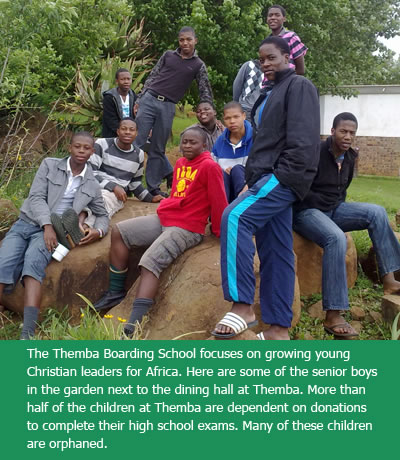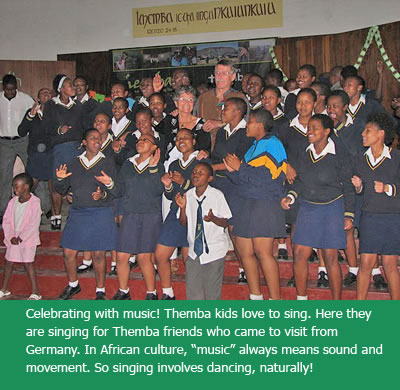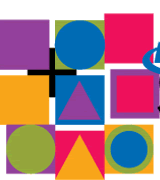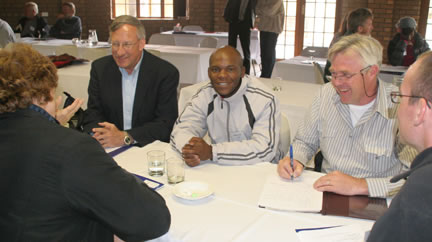
 An Act of Hope
An Act of Hope
Themba [‘tem-ba’] is a word in the Zulu language meaning “hope.” Themba’s story starts more than 150 years ago, in the small German village of Hermannsburg, which is about one hour south of the city of Hamburg. In this village lived a pastor of the Lutheran church, Louis Harms. He was a powerful preacher, and his work resulted in a spiritual awakening among Lutherans living in northern Germany.
In 1853 his congregation sent a group of missionaries into Africa. The group consisted of both trained theologians, who would reach out to the indigenous peoples of Africa, as well as lay missionaries, who were intended to provide technical and financial support to the preachers. Some of these Lutheran missionaries received permission by the British colonial authorities of the day to start working in an area of South Africa, which is close to the modern-day border of Swaziland. This is the area where Themba is today.
Over the next 50 years many more Lutheran missionaries from Germany came to Africa. Over time Lutheran congregations were established, serving both African people in a variety of indigenous languages as well as the German-speaking descendants of the missionaries. Of the three Lutheran churches in southern Africa, two have an agreement with the Lutheran Church–Missouri Synod (LCMS), namely the Lutheran Church of Southern Africa (LCSA) and the Free Evangelical Lutheran Synod in South Africa (FELSISA). The LCSA serves people indigenous to Africa, while the FELSISA mainly serves descendants of the German missionaries that immigrated to South Africa all those years ago.
Cooperation between these two churches became difficult as a result of the political system of “Apartheid” in South Africa, which forcefully kept people from different races separate from one another from 1948 to 1994. The German-speaking congregations over time had established primary schools with boarding facilities for their children next to their church buildings. But education for black children was seen as being the responsibility of the government of the day.
 In the 1960s and ’70s, in the midst of the darkest time of Apartheid, two Lutheran missionaries, Gottfried Stallmann and Stillfried Niebuhr, worked among the poverty-stricken farm-worker communities in the area where Themba is today. They managed to establish 28 primary schools to serve the children who were living in remote rural areas. Previously, these children had no access to education, since the Apartheid government refused to build any infrastructure for “black” people in an area declared “white.”
In the 1960s and ’70s, in the midst of the darkest time of Apartheid, two Lutheran missionaries, Gottfried Stallmann and Stillfried Niebuhr, worked among the poverty-stricken farm-worker communities in the area where Themba is today. They managed to establish 28 primary schools to serve the children who were living in remote rural areas. Previously, these children had no access to education, since the Apartheid government refused to build any infrastructure for “black” people in an area declared “white.”
Then African parents and children alike called for a high school. Missionary Niebuhr, himself a descendant of the German missionaries who had come to South Africa a century before, took this call to heart. He tells this story: “In January 1986, I found six boys from one of my confirmation classes sitting on the lawn in front of our house in Dirkiesdorp, with some blankets and personal belongings. ‘What are you doing here?’ I asked them. ‘We heard you are starting a high school,’ one of the boys responded. I was stunned. I had been trying to convince the government to start a high school for African kids in the area, but I certainly had not planned to start a school myself. I saw this as government’s responsibility. But I also knew that these six boys really had no chance to access a high school. I went into the house, telling my wife, Elisabeth, about the six kids on our lawn. She said, ‘I’ll cook for them.’ That settled the matter.”
Missionary Niebuhr got permission from the farm owner next to Dirkiesdorp, where a primary school was based, to use one of the classrooms for Grade 8 education. Next, Niebuhr managed to convince a retired educator to teach these boys. So the boys slept in the classroom at night and received lessons during the day. This is how the Sinethemba Agricultural & Technical Secondary School started. Learner numbers grew, and donations from Germany helped to support the work. Local donors helped to purchase the farm on which the school was built and the LCMS donated the money to expand the original school building. Since those early days, many changes have taken place. For more than 25 years the Themba Trust has been able to help boys and girls from poverty-stricken African families complete high school.
 Today more than 1,000 students are served at Siyathema Secondary School and Sinethemba Boarding School.
Today more than 1,000 students are served at Siyathema Secondary School and Sinethemba Boarding School.
The Themba Trust raises funds for its scholarship fund to enable poor children to stay in its boarding facilities, in order to complete their high-school education at the Sinethemba School.
South African Lutherans have felt very isolated from one another and the rest of the world, because of the impact of Apartheid. It is a blessing to now be connected through LEA to Lutherans working in the field of education globally. South Africa and the rest of Africa are faced with enormous challenges. Providing education based on a Christian foundation is an act of hope and the key to overcoming poverty in Africa.
Reinhild Niebuhr is a niece of the founder of the Themba Trust, missionary Stillfried Niebuhr. Together with her husband, Nico den Oudsten, she has been supporting the work of the Themba Trust since 2003. Nico serves as the CEO, and Reinhild is the chairperson of the Trust and helps the organization on a voluntary basis. Trained as a journalist and with an honors degree in German, Reinhild's background is in communication, strategy, consulting, and publishing. “My calling is to help youth in Africa connect to Christ and fulfill their God-given potential.”
Photos courtesy Reinhild Niebuhr, The Themba Trust.








